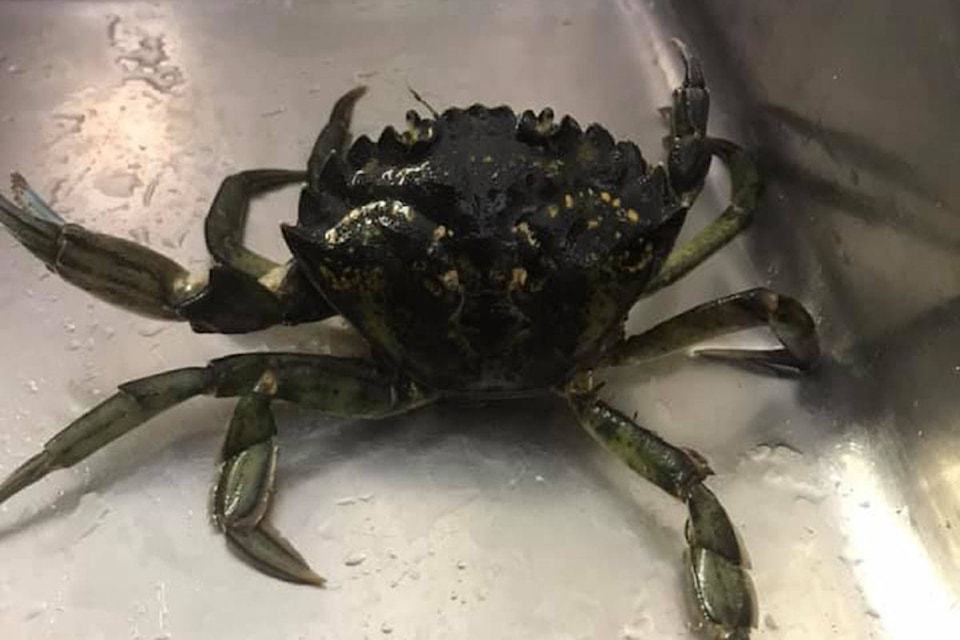Glenn Irivine spends a lot of time out in the Ladysmith harbour, so he’s used to seeing invasive species. But Irvine was shocked when he found a European Green Crab in the northern end of Ladysmith’s harbour.
RELATED: Unidentified sponge may be the latest marine species invading Ladysmith Harbour
Irivine’s wife Stephanie posted the find to Facebook telling people to be on the lookout for the crabs. The Irvines reported the find to the Department of Fisheries and Oceans, which Stephanie says set off a flurry of phone calls with the DFO.
“They were surprised the crab had come here so fast. They knew it was coming, they were hoping it wouldn’t infiltrate the Georgia Strait as fast as it did, but it obviously did,” she said.
The European Green Crabs are a problem because they will kill juvenile crabs, clams and mussels. They also threaten native species of eelgrass, which are an at-risk species. European Green Crabs flourish in estuary settings like those found in the mudflats of Ladysmith harbour.
Distinctive characteristics include five points on each side of the shell, distinctive markings on its back, and two back legs that will move right behind the creature.
Dr. Thomas Therriault, a research scientist with the DFO confirmed that the crab found was a European Green Crab. He said that the crab is a large male and although the finding is concerning, there’s no evidence to suggest that there’s local reproduction of European Green Crabs in Ladysmith.
“We don’t consider Green Crab to be established in the Salish Sea outside of Sooke Basin,” he said. “A one-off finding is not the end of the world, but it is concerning and we want to know about it.”
Further study will be required to determine if there are more European Green Crabs in Ladysmith or if this was just a one-off event.
Therriault said that the crabs likely worked their way up from San Francisco where they’ve been established since the 1980s.
“They’ve been working their way up the coast. That’s the most likely scenario for spread — not to say that movement by ships can’t happen or be contributing, but their larvae can float around out there for 30 to 45 days.”
European Green Crabs have been found in B.C. for the last 20 years. They have been found primarily on the West Coast of Vancouver Island and further north near Haida Gwaii.
RELATED: ‘A grave concern’: European green crabs discovered on Haida Gwaii
Therriault said that the DFO wants people to report sightings of European Green Crabs in the Salish Sea. Sightings can be reported to AISPACIFIC@dfo-mpo.gc.ca.
